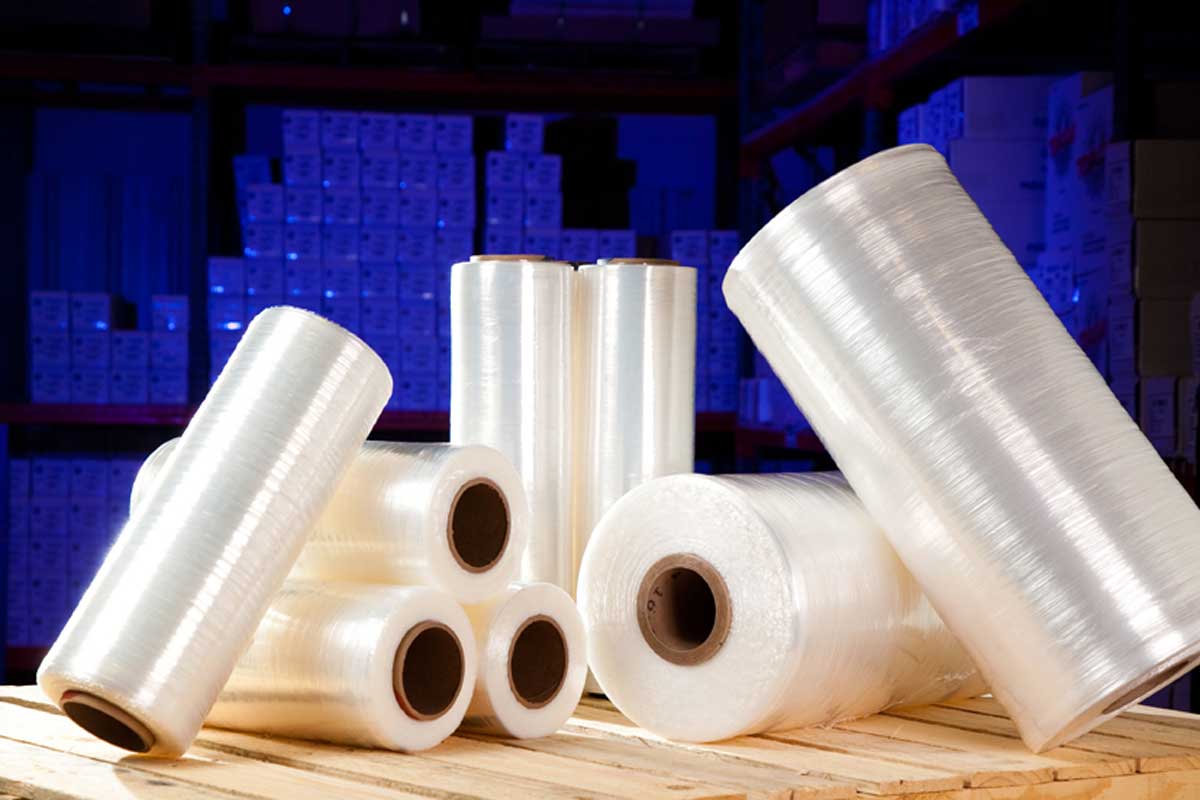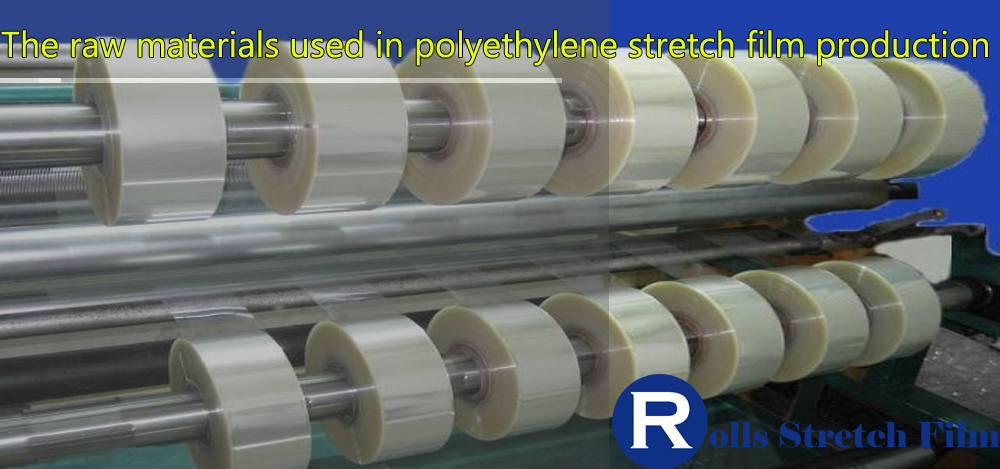The production of polyethylene stretch film has become increasingly important in the plastics industry. With the global demand for this versatile plastic growing steadily, manufacturers are looking to the future and gearing up for what lies ahead. As we approach 2023, the raw materials used in polyethylene stretch film production will be more important than ever. From traditional natural resources to emerging new technological components, understanding what goes into making this product is essential for companies that want to stay competitive in their market. By examining current trends in research and development, as well as material sourcing strategies, it’s clear that manufacturers are actively seeking better ways to meet consumer demand while keeping costs low. With solutions ranging from advanced recycling techniques to biodegradable alternatives, tomorrow’s industry leaders must be prepared to adapt and innovate to keep up with consumer trends and environmental restrictions.
Raw materials used in the production of PE stretch film
- Polyethylene (PE)
- Additives such as plasticizers and UV stabilizers

This report provides a detailed analysis of the raw materials used in producing polyethylene stretch film in 2023. It focuses on the most notable markets, provides insights into product features, and highlights vital suppliers. With an emphasis on sustainability, the report evaluates whether current market trends will likely cause dramatic changes to the raw materials used for producing future polyethylene stretch films.
This report aims to analyze how sustainable practices impact manufacturing processes and raw materials used for producing polyethylene stretch film. A comprehensive overview of recent developments and market trends provides an overview of potential shifts that could occur at both global and local levels. Additionally, it examines alternative sources for raw material supply and evaluates how manufacturers can adjust their approaches to ensure sustainable long-term production methods.
In more detail, this report offers an extensive evaluation of existing supply chain models related to polyethylene stretch film production, including those factors that will impact cost and availability. In particular, it considers changing legislation regarding environmental protection and progressions within sustainable practices at various stages throughout the production process. Subsequently, it outlines which suppliers are currently providing key components for developing efficient strategies while emphasizing cost savings over quality compromises
This report offers readers a comprehensive analysis of current markets and raw material supply chains associated with polyethylene stretch film production. It considers sustainability and economic considerations while analyzing what is likely to remain stable or shift in market conditions during the year 2023. Moreover, it provides insights from key players operating within these markets and offers buyers practical advice on selecting quality suppliers with reliable products and services at competitive prices.
Brief overview of PE stretch film and its uses
The PE stretch film market size has grown significantly in recent years due to its increasing use by manufacturers in the food, consumer goods, industrial equipment, and automotive sectors. According to market reports, the global PE stretch film market was valued at over USD 8 billion in 2019 and is expected to record steady growth during the forecast period through 2025. At the same time, demand for PE stretch films will be driven primarily by their low manufacturing cost structure relative to other packaging materials like shrink films or tapes. Consumers are also increasingly attracted by their superior properties, such as strength, durability, transparency, and recyclability.
Market analysis indicates that manufacturers focus on strategies such as product innovation using special additives like UV stabilizers, affinity agents, mineral fillers, and colorants. They are improving economies of scale through mergers & acquisitions and reducing costs associated with raw materials and energy consumption by optimizing the manufacturing process structure to remain competitive in this market space. In addition, there is significant competition from manufacturers offering products such as PVC shrink films which cater to similar needs as PE stretch films. However, usage constraints such as higher pricing due to additional production costs limit their adoption among consumers who prefer low-cost solutions like PE stretch films over pricier alternatives like PVC shrink wraps.
The market for PE stretch films is highly competitive, with a large number of domestic as well as international players providing quality products at reasonable prices. With increasing worldwide demand for sustainable packaging solutions that meet industry regulations and standards, manufacturers have used PE stretch films to make their operations more efficient and cost-effective. According to various market reports and research conducted by leading analysts, the growth prospects for this industry are expected to remain positive over a forecast period of 2020 to 2027 due to growing environmental concerns among consumers. Additionally, advancements in manufacturing techniques have enabled vendors to reduce their overall costs significantly, which has further aided market growth across all regions globally.

In addition to providing an overview of industry dynamics such as market size analysis, market share analysis, and key players analysis based on region-level breakdowns for North America, Europe, Asia Pacific, etc., the research report focuses on providing insights into pricing structures, raw material procurement strategies as well as product offerings from key vendors across these regions. With growing demand from retailers looking towards more sustainable packaging options combined with continuing technological advancements in production processes, the shrink film market consumers will undoubtedly continue its impressive growth trajectory in the future.
Raw materials used in the production of PE stretch film
1. Polyethylene (PE)
The main component used in the production of PE stretch film, which has been around for decades and is valued for its flexibility, strength, and durability. PE comprises ethylene monomers that are then polymerized to form long chains of polyethylene molecules. This makes it an ideal material for many industrial applications, including stretch film production. Additives such as plasticizers and UV stabilizers are also used in the production process to enhance specific properties of the stretch film, such as its clarity and tensile strength.
2. Plasticizers
Chemical compounds soften plastic when added at low concentrations, making them more flexible and easier to work with during film production. Commonly used plasticizers include phthalates, hydrocarbons, and esters. These additives help create a more malleable product that can be stretched further than non-plasticized film without compromising its structural integrity or tearing during use.
3. UV stabilizers
Chemicals used in PE stretch film production protect the end product from ultraviolet light degradation over time – an important factor given that most products manufactured using them will be exposed to outdoor conditions in transit or storage. The most commonly used UV stabilizer is hindered amine light stabilizer (HALS), which absorbs energy from multiple wavelengths of UV radiation before releasing it as harmless heat into the environment rather than damaging the plastic itself.

Sources of raw materials
Polyethylene is a versatile plastic material derived from fossil fuels or renewable resources such as sugarcane or corn. While the more traditional method uses petroleum as its source, bioplastics are becoming increasingly popular due to their lower environmental impact. PE stretch film production also requires various additives which can be sourced from chemical manufacturers around the world. These additives give the film its desired characteristics, such as strength, haptics, and transparency.
Vendor Classification Market Positioning is critical when selecting raw materials for manufacturing PE stretch film. Market trends are constantly changing, and it is crucial to understand how different vendors are positioned to ensure you get the most suitable product for your application. With the increasing adoption of bioplastics, understanding current market trends will help producers stay ahead of the curve and select appropriate raw materials to use in their production process.
The revenue forecast is essential to any business plan, and this applies mainly when producing PE stretch films. Companies need to accurately predict revenue across long periods by considering factors such as changing market dynamics, seasonality, supply and demand shifts, and other key elements that could influence sales figures. An analysis period should be determined to gauge which strategies lead to increased revenue over time and make necessary adjustments accordingly.
Conclusion
In conclusion, considering the changes in technology and plastic raw materials over the last decade, it is clear that manufacturers of polyethylene stretch film must be aware of the market’s trends to ensure they continue to produce quality products. By following the tips outlined in this article, companies can benefit from using more sustainable and cost-effective raw materials while producing stronger and more reliable products. Furthermore, many new raw material options feature better properties than traditional solutions. Manufacturers must keep up with technological advancements to take advantage of these new opportunities and remain competitive. With continued research and investment into new plastic raw materials, polyethylene stretch film production will remain profitable and efficient into 2023 and beyond.














